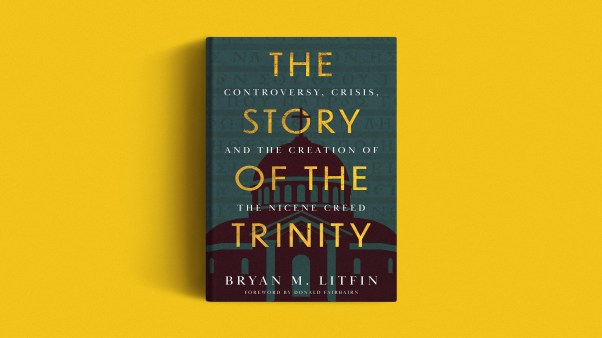Countless times the Bible identifies God as “the God of Abraham, Isaac and Jacob”. Why? Because God, being eternal, thinks long term. In ministry, we must run the race, but run it keeping in mind those who have run before us and those who will run after us. In any organization, the transition of leadership is always crucial but most times never thought out. In ministry, we must get it right.
I am the fortunate product of a transition gone right. Unfortunately, I’m in the minority as so many pastors who are the successors, or even the predecessors, share with me their horror stories of anything but a smooth process. For example, I heard once of a pastor who transitioned the church to one of his assistant pastors only to have to return 6 months later to take the church back because it was “falling apart” and everyone was leaving. The pastor later admitted that he had made the transition too quickly and neither the church nor the assistant pastor were ready. Conversely, I heard a story of a pastor who had supposedly transitioned the church but every time he showed up he would take over (including the actual service!). This caused so much confusion that staff and leadership started leaving. Everyone knew that the former Senior Pastor just couldn’t let go. Two very different stories. Two very similar results. One let go too quickly. The other wouldn’t let go completely. Stories like these have caused people to ask me, “How was it that the transition from your father to you went so well?” Here is what I’ve realized as I look back on the transition that happened 8 years ago (and by the way, the fact that my spiritual father happens to be my earthly father doesn’t make the process automatically easier, it can make it even harder).
The starting point of a godly, well-orchestrated transition begins with a clear desire on both parts for the transition. When the current senior pastor has “mixed emotions” about passing the baton, it is a recipe for disaster. Equally, when the successor is “not sure” they really want to receive the baton, the transition is headed for complications. As obvious as it sounds, neither party should move forward until they know in their spirit that this is God’s will and in his perfect timing. This requires honest, vulnerable communication. And if the two parties involved in a potential transition aren’t at a place where they can have open dialogue, you’re probably starting the race with a limp.
Second, there must be a natural progression. The recipient of the pastorate cannot be a stranger off the street that the church has never seen or heard. So a few years before I assumed the role of senior pastor, I was named associate pastor, and my responsibility and authority was logically increased over time. Whenever my father was out of town he would tell the church staff and leadership that if they had any questions to address them to me. This showed everyone that he trusted me and that he and I were walking in complete unity. This also empowered me which was key in keeping others from feeling that I was trying to assume leadership that hadn’t been delegated to me.
In a relay race, the most crucial part of the race is the handoff or changeover. No matter how fast the other team is, if the baton is dropped, they will be disqualified. The interesting thing about the passing of the baton is that there is a range of space known as the exchange zone where it can be passed. Not before that range of time nor after.
If you are “next in line” for the senior pastor role, make sure you stay in line. Don’t get ahead of the process! Yes, there will be times when you are chomping at the bit to start leading already. That’s good. That shows that there is first chair leadership drive in you. However, if you do not remain patient, you will fail a character test along the way. That character test is patience and honor.
The biggest temptation of the predecessor is to wait too long to pass the baton and conversely for the successor to instigate that process too soon. Wait for the range of time. Don’t be early. Don’t be late.
So how do you know when the time is right? What are the signs? This timing has tangible and intangible indicators. The intangible and most important trigger is the prompting and leading of the Holy Spirit. We must wait upon the Lord and then follow the cloud when it starts to move. Simultaneously, the Holy Spirit can manifest itself through wisdom and wisdom manifests itself through tangible signs. It is never wise to ignore a stop sign. It is important to pay attention to the yield sign.
One sign to look for is the increased influence of the successor. Done in the wrong spirit you get an Absalom. (By the way, if you are the successor in waiting, be careful about calling someone a “Saul” because they probably think you are an “Absalom” when we all believe we are the “David” of the story.) Increased influence can be a great sign. Increased influence can be the sign of a “Joshua”, “Elisha” or a “Timothy”. Increased influence is a sign of growth and the ability to lead. So look for this sign. But don’t just permit the influence – promote it! When the predecessor willingly promotes the increased influence of the successor it only further validates their maturity in who they are in God and His divine plan.
Another sign can be innovative ideas and fresh vision from the successor while they are still in the support role. When these ideas, shared with a humble and submissive spirit, excite the heart of the predecessor, it could be a confirming sign that it is time for transition. It is only natural that the motivation to implement new ideas increases for the successor while it wanes for the predecessor. While the heart of the predecessor should be perpetuated which will naturally honor their legacy, the methodology will most likely shift, bringing needed innovation to the organization. Innovative ideas may be an indicator that it is time for transition.
Finally, in the passing of the baton, there is a unique dynamic. The baton is not thrown from one runner to the other. Neither is the baton placed on the ground for the other runner to pick up. There is this crucial moment where the first runner, who is in a full sprint at the height of his race performance, hands off the baton to the next runner who isn’t just standing there, rather he’s already running as he receives the baton. But interestingly enough, the space in time in which both are holding the baton at the same time is a split second. Then the first runner let’s go.
My dad often quips, “Anything with two heads is a monster.” I’m grateful that he let go. Monsters are weird. And how weird and unproductive would it be for the runners in a relay race to try and run around the track while both hold tightly to the baton. Some might think that this is the best way to ensure that the baton isn’t dropped. But actually, it’s an awkward way to run a race and will disqualify you.
For both parties involved, this process requires faith. Faith in each other. But most of all, faith in the God of Abraham, Isaac, and Jacob.
Tim Holland serves as Pastor of LifeChurch – Mundo de Fe in Coppell, Texas, a suburb of Dallas. Tim is a graduate of Christ for the Nations Institute and Dallas Baptist University. He and his wife Abigail have 4 daughters and one son.









